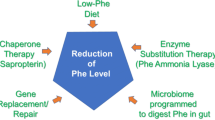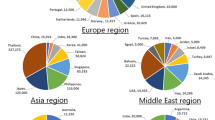Abstract
Cobalamin C defect is caused by pathogenic variants in the MMACHC gene leading to impaired conversion of dietary vitamin B12 into methylcobalamin and adenosylcobalamin. Variants in the MMACHC gene cause accumulation of methylmalonic acid and homocysteine along with decreased methionine synthesis. The spectrum of MMACHC gene variants differs in various populations. A total of 19 North Indian children (age 0–18 years) with elevated methylmalonic acid and homocysteine were included in the study, and their DNA samples were subjected to Sanger sequencing of coding exons with flanking intronic regions of MMACHC gene. The genetic analysis resulted in the identification of a common pathogenic nonsense mutation, c.394C > T (R132*) in 85.7% of the unrelated cases with suspected cobalamin C defect. Two other known mutations c.347T > C (7%) and c.316G > A were also detected. Plasma homocysteine was significantly elevated (> 100 µmol/L) in 75% of the cases and methionine was decreased in 81% of the cases. Propionyl (C3)-carnitine, the primary marker for cobalamin C defect, was found to be elevated in only 43.75% of cases. However, the secondary markers such as C3/C2 and C3/C16 ratios were elevated in 87.5% and 100% of the cases, respectively. Neurological manifestations were the most common in our cohort. Our findings of the high frequency of a single MMACHC R132* mutation in cases with combined homocystinuria and methylmalonic aciduria may be proven helpful in designing a cost-effective and time-saving diagnostic strategy for resource-constraint settings. Since the R132* mutation is located near the last exon–exon junction, this is a potential target for the read-through therapeutics.



Similar content being viewed by others
Availability of data and materials
The data that support the findings of this study are available from the corresponding author upon reasonable request.
References
Augoustides-Savvopoulou P, Mylonas I, Sewell AC, Rosenblatt DS (1999) Reversible dementia in an adolescent with cblC disease: clinical heterogeneity within the same family. J Inherit Metab Dis 22(6):756–758. https://doi.org/10.1023/a:1005508620919
Boxer AL, Kramer JH, Johnston K, Goldman J, Finley R, Miller BL (2005) Executive dysfunction in hyperhomocystinemia responds to homocysteine-lowering treatment. Neurology 64(8):1431–1434. https://doi.org/10.1212/01.WNL.0000158476.74580.A8
Carrillo-Carrasco N, Venditti CP (2012) Combined methylmalonic acidemia and homocystinuria, cblC type. II. Complications, pathophysiology, and outcomes. J Inherit Metab Dis 35(1):103–114. https://doi.org/10.1007/s10545-011-9365-x
Chang JT, Chen YY, Liu TT, Liu MY, Chiu PC (2011) Combined methylmalonic aciduria and homocystinuria cblC type of a Taiwanese infant with c.609G>A and C.567dupT mutations in the MMACHC gene. Pediatr Neonatol 52(4):223–226. https://doi.org/10.1016/j.pedneo.2011.05.006
Dabrowski M, Bukowy-Bieryllo Z, Zietkiewicz E (2018) Advances in therapeutic use of a drug-stimulated translational readthrough of premature termination codons. Mol Med 24(1):25. https://doi.org/10.1186/s10020-018-0024-7
Devi AR, Naushad SM (2017) Targeted exome sequencing for the identification of complementation groups in methylmalonic aciduria: a south Indian experience. Clin Biochem 50(1–2):68–72. https://doi.org/10.1016/j.clinbiochem.2016.08.016
Duret L (2009) Mutation patterns in the human genome: more variable than expected. PLoS Biol 7(2):e1000028. https://doi.org/10.1371/journal.pbio.1000028
Fischer S et al (2014) Clinical presentation and outcome in a series of 88 patients with the cblC defect. J Inherit Metab Dis 37(5):831–840. https://doi.org/10.1007/s10545-014-9687-6
Froese DS, Gravel RA (2010) Genetic disorders of vitamin B12 metabolism: eight complementation groups–eight genes. Expert Rev Mol Med 12:e37. https://doi.org/10.1017/S1462399410001651
Guo K, Zhou X, Chen X, Wu Y, Liu C, Kong Q (2018) Expanded newborn screening for inborn errors of metabolism and genetic characteristics in a Chinese population. Front Genet 9:122. https://doi.org/10.3389/fgene.2018.00122
Gurkas E, Kartal A, Aydin K, Kucukcongar A, Dilber C, Ceylaner S (2015) Reversible clinical and magnetic resonance imaging findings in late-onset cobalamin C defect. Genet Couns 26(4):425–430
Han B, Cao Z, Tian L, Zou H, Yang L, Zhu W, Liu Y (2016) Clinical presentation, gene analysis and outcomes in young patients with early-treated combined methylmalonic acidemia and homocysteinemia (cblC type) in Shandong province. China Brain Dev 38(5):491–497. https://doi.org/10.1016/j.braindev.2015.10.016
Hankey GJ, Eikelboom JW (1999) Homocysteine and vascular disease. Lancet 354(9176):407–413. https://doi.org/10.1016/S0140-6736(98)11058-9
Hu S, Mei S, Liu N, Kong X (2018) Molecular genetic characterization of cblC defects in 126 pedigrees and prenatal genetic diagnosis of pedigrees with combined methylmalonic aciduria and homocystinuria. BMC Med Genet 19(1):154. https://doi.org/10.1186/s12881-018-0666-x
Huemer M et al (2015) Newborn screening for homocystinurias and methylation disorders: systematic review and proposed guidelines. J Inherit Metab Dis 38(6):1007–1019. https://doi.org/10.1007/s10545-015-9830-z
Jadah RHS (2012) Seven year old boy with abnormal behaviour—methylmalonic aciduria and homocystinuria. Bahrain Med Bull 34(3):145–147
Kaur R et al (2020) Seven novel genetic variants in a North Indian cohort with classical homocystinuria. Sci Rep 10(1):17299. https://doi.org/10.1038/s41598-020-73475-5
Keyfi F et al (2019) Mutation analysis of genes related to methylmalonic acidemia: identification of eight novel mutations. Mol Biol Rep 46(1):271–285. https://doi.org/10.1007/s11033-018-4469-0
Koksal V, Baris I, Etlik O (2007) Primer-engineered multiplex PCR-RFLP for detection of MTHFR C677T, prothrombin G20210A and factor V Leiden mutations. Exp Mol Pathol 83(1):1–3. https://doi.org/10.1016/j.yexmp.2006.12.006
Kuzmiak HA, Maquat LE (2006) Applying nonsense-mediated mRNA decay research to the clinic: progress and challenges. Trends Mol Med 12(7):306–316. https://doi.org/10.1016/j.molmed.2006.05.005
Lerner-Ellis JP et al (2006) Identification of the gene responsible for methylmalonic aciduria and homocystinuria, cblC type. Nat Genet 38(1):93–100. https://doi.org/10.1038/ng1683
Lerner-Ellis JP et al (2009) Spectrum of mutations in MMACHC, allelic expression, and evidence for genotype-phenotype correlations. Hum Mutat 30(7):1072–1081. https://doi.org/10.1002/humu.21001
Liu MY et al (2010) Mutation spectrum of MMACHC in Chinese patients with combined methylmalonic aciduria and homocystinuria. J Hum Genet 55(9):621–626. https://doi.org/10.1038/jhg.2010.81
McHugh D et al (2011) Clinical validation of cutoff target ranges in newborn screening of metabolic disorders by tandem mass spectrometry: a worldwide collaborative project. Genet Med 13(3):230–254. https://doi.org/10.1097/GIM.0b013e31820d5e67
Morel CF, Lerner-Ellis JP, Rosenblatt DS (2006) Combined methylmalonic aciduria and homocystinuria (cblC): phenotype-genotype correlations and ethnic-specific observations. Mol Genet Metab 88(4):315–321. https://doi.org/10.1016/j.ymgme.2006.04.001
Nagy E, Maquat LE (1998) A rule for termination-codon position within intron-containing genes: when nonsense affects RNA abundance. Trends Biochem Sci 23(6):198–199. https://doi.org/10.1016/s0968-0004(98)01208-0
Nogueira C et al (2008) Spectrum of MMACHC mutations in Italian and Portuguese patients with combined methylmalonic aciduria and homocystinuria, cblC type. Mol Genet Metab 93(4):475–480
Powers JM et al (2001) Neurological and neuropathologic heterogeneity in two brothers with cobalamin C deficiency. Ann Neurol 49(3):396–400
Pupavac M et al (2016) Inborn error of cobalamin metabolism associated with the intracellular accumulation of transcobalamin-bound cobalamin and mutations in ZNF143, which codes for a transcriptional activator. Hum Mutat 37(9):976–982. https://doi.org/10.1002/humu.23037
Quintana AM et al (2017) Mutations in THAP11 cause an inborn error of cobalamin metabolism and developmental abnormalities. Hum Mol Genet 26(15):2838–2849. https://doi.org/10.1093/hmg/ddx157
Richard E et al (2009) Genetic and cellular studies of oxidative stress in methylmalonic aciduria (MMA) cobalamin deficiency type C (cblC) with homocystinuria (MMACHC). Hum Mutat 30(11):1558–1566. https://doi.org/10.1002/humu.21107
Rosenblatt DS, Aspler AL, Shevell MI, Pletcher BA, Fenton WA, Seashore MR (1997) Clinical heterogeneity and prognosis in combined methylmalonic aciduria and homocystinuria (cblC). J Inherit Metab Dis 20(4):528–538. https://doi.org/10.1023/a:1005353530303
Sharda S, Angurana SK, Walia M, Attri S (2013) Defect of cobalamin intracellular metabolism presenting as diabetic ketoacidosis: a rare manifestation. JIMD Rep 11:43–47. https://doi.org/10.1007/8904_2013_220
Sharma G et al (2014) Analysis of 26 amino acids in human plasma by HPLC using AQC as derivatizing agent and its application in metabolic laboratory. Amino Acids 46(5):1253–1263. https://doi.org/10.1007/s00726-014-1682-6
Sharma N et al (2018) Capitalizing on the heterogeneous effects of CFTR nonsense and frameshift variants to inform therapeutic strategy for cystic fibrosis. PLoS Genet 14(11):e1007723. https://doi.org/10.1371/journal.pgen.1007723
Stenson PD et al (2020) The Human Gene Mutation Database (HGMD ®): optimizing its use in a clinical diagnostic or research setting. Hum Genet 139(10):1197–1207. https://doi.org/10.1007/s00439-020-02199-3
Straczek J, Felden F, Dousset B, Gueant JL, Belleville F (1993) Quantification of methylmalonic acid in serum measured by capillary gas chromatography-mass spectrometry as tert.-butyldimethylsilyl derivatives. J Chromatogr 620(1):1–7
Thauvin-Robinet C et al (2008) The adolescent and adult form of cobalamin C disease: clinical and molecular spectrum. J Neurol Neurosurg Psychiatry 79(6):725–728. https://doi.org/10.1136/jnnp.2007.133025
Tong W et al (2018) Whole-exome sequencing helps the diagnosis and treatment in children with neurodevelopmental delay accompanied unexplained dyspnea. Sci Rep 8(1):5214. https://doi.org/10.1038/s41598-018-23503-2
Wang F et al (2010) Clinical, biochemical, and molecular analysis of combined methylmalonic acidemia and hyperhomocysteinemia (cblC type) in China. J Inherit Metab Dis 33(Suppl 3):S435-442. https://doi.org/10.1007/s10545-010-9217-0
Wang SJ, Yan CZ, Liu YM, Zhao YY (2018) Late-onset cobalamin C deficiency Chinese sibling patients with neuropsychiatric presentations. Metab Brain Dis 33(3):829–835. https://doi.org/10.1007/s11011-018-0189-3
Wang X, Yang Y, Li X, Li C, Wang C (2019) Distinct clinical, neuroimaging and genetic profiles of late-onset cobalamin C defects (cb1C): a report of 16 Chinese cases. Orphanet J Rare Dis 14(1):109. https://doi.org/10.1186/s13023-019-1058-9
Watkins D, Rosenblatt DS (2011) Inborn errors of cobalamin absorption and metabolism. Am J Med Genet C Semin Med Genet 157C(1):33–44. https://doi.org/10.1002/ajmg.c.30288
Yu HC et al (2013) An X-linked cobalamin disorder caused by mutations in transcriptional coregulator HCFC1. Am J Hum Genet 93(3):506–514. https://doi.org/10.1016/j.ajhg.2013.07.022
Zhou W, Li H, Wang C, Wang X, Gu M (2018) Newborn screening for methylmalonic acidemia in a Chinese population: molecular genetic confirmation and genotype phenotype correlations. Front Genet 9:726. https://doi.org/10.3389/fgene.2018.00726
Zong Y, Liu N, Zhao Z, Kong X (2015) Prenatal diagnosis using genetic sequencing and identification of a novel mutation in MMACHC. BMC Med Genet 16:48. https://doi.org/10.1186/s12881-015-0196-8
Acknowledgments
Authors would like to thank all the children and their parents for their participation in the study. We acknowledge the whole staff of the Pediatric Biochemistry Unit for their support. We acknowledge the Council of Scientific & Industrial Research (CSIR), New Delhi, Government of India for providing student fellowship and contingency for research work.
Funding
This work was supported by the Council of Scientific & Industrial Research (CSIR), New Delhi, Government of India (Grant No. 09/141(0191)/2013-EMR-I) in the form of a student fellowship.
Author information
Authors and Affiliations
Contributions
RK planned the study, collected and processed all the samples, carried out all the analyses, analyzed data, and drafted and revised the manuscript. SVA planned the study, supervised data collection and analysis, and critically reviewed the manuscript. AGS helped in patient enrolment, supervised the study, analyzed clinical data, and critically reviewed the manuscript. NS helped in patient enrolment, supervised the study, and analyzed clinical data.
Corresponding author
Ethics declarations
Conflicts of interest
The authors have no conflicts of interest to disclose.
Ethical approval
The study was approved by the Institutional Ethics Committee (No. NK/3938/PhD) and all the experimental protocols were conducted in compliance with the regulations and guidelines of the Institute Ethics Committee of Postgraduate Institute of Medical Education & Research (PGIMER), Chandigarh, India.
Informed consent
Informed consent (assent wherever applicable) was obtained from the parents of the children studied.
Additional information
Edited by E. Closs.
Publisher's Note
Springer Nature remains neutral with regard to jurisdictional claims in published maps and institutional affiliations.
Supplementary Information
Below is the link to the electronic supplementary material.
Rights and permissions
About this article
Cite this article
Kaur, R., Attri, S.V., Saini, A.G. et al. A high frequency and geographical distribution of MMACHC R132* mutation in children with cobalamin C defect. Amino Acids 53, 253–264 (2021). https://doi.org/10.1007/s00726-021-02942-8
Received:
Accepted:
Published:
Issue Date:
DOI: https://doi.org/10.1007/s00726-021-02942-8




